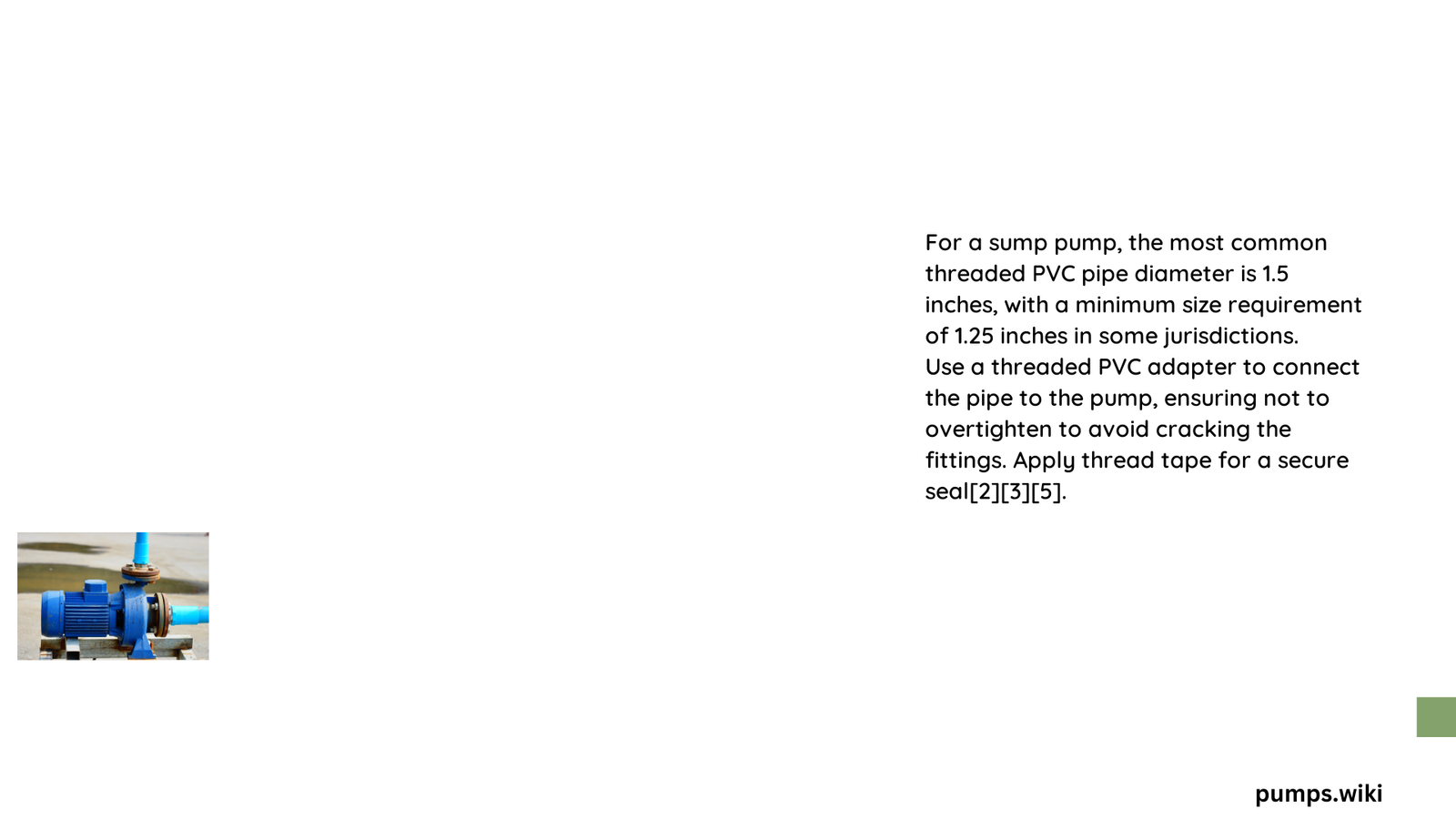Threaded PVC pipe is a critical component in sump pump systems, providing reliable discharge and efficient water management for residential and commercial applications. Homeowners and professionals rely on these pipes to effectively redirect water away from foundations, preventing potential water damage and basement flooding. Understanding the nuances of threaded PVC pipe selection, installation, and performance can significantly enhance your sump pump’s overall effectiveness and longevity.
What Are the Essential Dimensions for Threaded PVC Pipe?
Selecting the right dimensions for your threaded PVC pipe is crucial for optimal sump pump performance. Here’s a comprehensive breakdown:
Pipe Diameter Considerations
- Standard Sizes:
- 1.5-inch diameter
- 2-inch diameter
- Recommended Usage:
- 1.5-inch: Suitable for most residential applications
- 2-inch: Provides enhanced flow rates and reduced pump wear
Pressure and Material Characteristics
| Pipe Characteristic | Details |
|---|---|
| Material | PVC (Polyvinyl Chloride) |
| Corrosion Resistance | Excellent |
| Typical Pressure Rating | Low to Moderate |
| Recommended Fitting Type | DWV (Drain, Waste, Vent) |
How to Choose the Right Threaded PVC Pipe Fittings?

Proper fitting selection ensures a robust and leak-free sump pump discharge system. Consider these key factors:
Fitting Types
- Elbows: For directional changes
- Tees: For branching connections
- Couplings: To join pipe sections
- Check Valves: Prevent backflow
Installation Best Practices
- Match fitting sizes precisely with pipe diameter
- Use PVC primer and cement for secure connections
- Ensure proper alignment and minimal resistance
- Verify pressure ratings match system requirements
What Tools Are Needed for Threaded PVC Pipe Installation?
Successful installation requires specific tools and techniques:
Essential Equipment
- Pipe cutter
- PVC primer
- PVC cement
- Measuring tape
- Level
- Wrench or pliers
- Pipe clamps or straps
Step-by-Step Installation Process
- Measure discharge distance accurately
- Cut pipe using a clean, perpendicular cut
- Deburr pipe ends to ensure smooth connections
- Apply primer to pipe and fitting surfaces
- Apply cement and connect components
- Install check valve near pump
- Secure pipe with clamps
- Test system for leaks and proper flow
What Are the Cost Considerations?
Pricing Breakdown
- PVC Pipe Costs:
- 1.5-inch: $1 – $3 per foot
- 2-inch: $2 – $5 per foot
- Fitting Costs:
- Elbows/Couplings: $5 – $10
- Check Valves: $10 – $20
Money-Saving Tips
- Purchase pipes and fittings in bulk
- Compare prices from multiple suppliers
- Consider long-term durability over initial cost
What Potential Challenges Might You Encounter?
Common Issues and Solutions
- Leaks: Ensure proper primer and cement application
- Blockages: Maintain gradual pipe slopes
- Physical Damage: Protect pipes during installation
- Backflow: Always install check valves
Pro Tips for Optimal Performance
- Regularly inspect pipe connections
- Maintain proper pipe slope
- Use pressure-rated fittings for added security
- Consider professional installation for complex systems
References:
– Eng-Tips Sump Pump Flow Ratings
– TractorByNet Pipe Selection
– Plumbing Zone Fitting Recommendations
